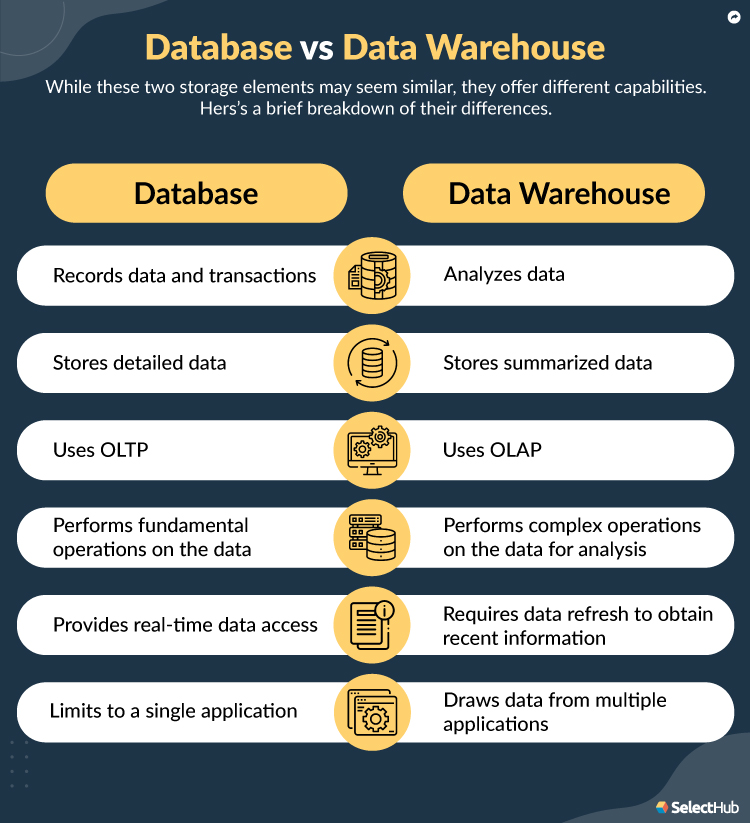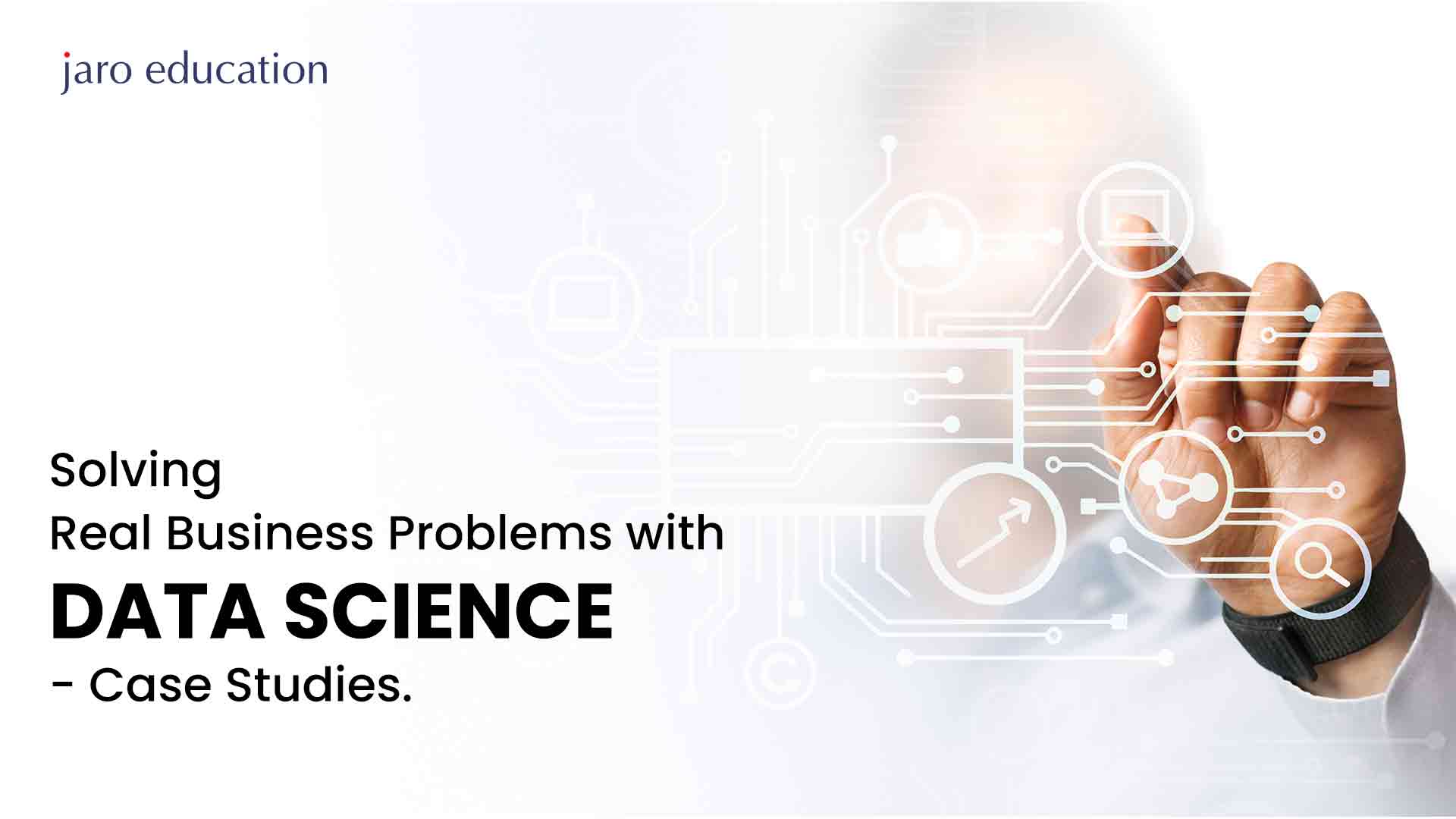Data Warehousing and Business Intelligence: Bridging the Gap with Data Engineering
Table of Contents

- jaro education
- 31, December 2023
- 9:00 am
The strategic significance of using data to inform decisions in the ever-changing world of modern business is undeniable. Business intelligence (BI) and data warehousing have become essential elements in this endeavour, serving as the backbone for companies looking to glean insights from their massive amounts of data. Data engineering is an essential field that bridges the gap between these two domains. It is vital to the smooth flow, integration, and optimisation of data for analytical purposes.
With an emphasis on closing the gap through courses in data engineering, IIM Kozhikode’s Professional Certificate Programme in Data Science for Business Decisions aims to improve your grasp of Python and Machine Learning in the context of Data Warehousing and Business Intelligence. A comprehensive curriculum designed for professionals, and beyond, this Python certification program takes an interactive learning approach. All within the framework of Python and Machine Learning, with a deliberate integration of important data engineering courses, the program prioritises understanding the practical applications of data science in the context of business and management over diving deeply into the complexities of programming.
Understanding Data Warehousing
A data warehouse serves as a central repository that gathers and preserves data from diverse sources. Similar to storing documents or photos on the cloud, having a digital “warehouse” for data facilitates easier usage and provides more extensive insights on a larger scale. This involves importing historical or real-time data feeds to report the most recent and integrated information. Data warehouses are primarily utilised for analytical purposes and business reporting. To harness the full potential of data, it is recommended to develop an integrated data strategy and an authentic narrative for your target audience. Combining your data warehouse with other business intelligence practices enhances the overall effectiveness.
Varieties of Data Warehousing Architecture
Having grasped the fundamental concepts of data warehousing, let’s delve into essential types that form the backbone of modern data management.
1. Holistic Enterprise Data Warehousing
At the forefront is the Enterprise Data Warehouse (EDW), a comprehensive system tailored for enterprises to centralise the storage and management of data from diverse sources. Functioning as a strategic and tactical decision support hub, the EDW empowers organisations with a unified platform for informed decision-making.
2. Dynamic Operational Data Store
Complementing the EDW, the Operational Data Store (ODS) takes the spotlight as a centralised database that operates in real-time. This dynamic repository serves operational reporting needs, stepping in where the EDW may fall short in addressing specific business reporting requirements. Real-time updates make the ODS a vital component for immediate insights.
3. Specialised Data Mart
In the realm of specificity, the Data Mart emerges as a tailored subset within the Data Warehousing (DWH) landscape. Precision is key, as Data Marts are crafted for dedicated business areas or teams, such as sales, HR, or marketing. This subject-oriented approach ensures users can swiftly extract the precise insights relevant to their domain, fostering agility in decision-making.
Exploring Business Intelligence
Business intelligence encompasses the processes of collecting, methodically organising, and analysing data. When people refer to business intelligence (BI), they typically mean the platforms and practices employed for the collection, integration, analysis, and presentation of business information. Beyond these technical aspects, BI plays a crucial role in improving business decision-making by ensuring that decisions are strategic. With BI, decisions are supported by data, providing a basis for understanding why one option might be more successful than another, backed by insights from past performance and research.
Data Engineering and Data Science
Understanding Data Science and Data Engineering is crucial for comprehending the complexities of managing and extracting value from data within an organisation. In the early stages of the data lifecycle, data engineering plays a vital role. This involves activities such as gathering and consuming unprocessed data from multiple sources, ensuring data accuracy through cleaning and preprocessing, and effectively managing databases. Data engineers are responsible for the infrastructure and architecture that facilitate data storage and retrieval, as well as organising and making data accessible for analysis.
On the other hand, data science focuses on deriving valuable insights from data. Data scientists conduct exploratory data analysis to create and train machine learning models for predictive analytics, identify patterns and trends in data, and generate useful insights. They operate at the intersection of statistics, mathematics, and subject matter expertise to make decisions based on data. While Data Engineering concentrates on infrastructure and data preparation, Data Science uses this prepared data to extract insightful information and make forecasts.
Collaboration between data science and data engineering is essential because the results of one directly impact the effectiveness of the other. Data scientists need access to clean, reliable, and well-organised data for analysis and modelling, which is provided by a well-architected data infrastructure. Without the foundational work of Data Engineering, the sophisticated analytics and insights generated by Data Science may be compromised.
Data Warehousing and Business Intelligence Synergy: Driving Strategic Decision-Making
The amalgamation of data warehousing and business intelligence has undergone a transformative evolution, expanding to encompass a myriad of processes and activities. The confluence of having pertinent data in your data warehouse and harnessing the capabilities of business intelligence opens up a plethora of practices that can catalyse strategic decision-making. Some of the pivotal options include, but are not confined to:
Data Mining: Unveiling Insights through Knowledge Discovery
Data mining, synonymous with knowledge discovery, is a pivotal process aimed at extracting actionable insights from extensive sets of raw data. This intricate process facilitates the identification of trends, themes, or patterns embedded within vast volumes of big data.
Performance Metrics: Gauging Business Dynamics
Metrics serve as instrumental tools for measuring the behaviour, activities, and performance of a business, its workforce, or specific campaigns. While these metrics are the outcomes of rigorous analysis, they can subsequently be amassed for further scrutiny. Performance metrics operate within a predefined data range, enabling the formulation, validation, or disapproval of hypotheses aligned with predetermined business objectives.
Querying: Ensuring Data Validity and Accuracy
Within the realms of business intelligence and data warehousing, analysts and business teams employ querying to assess the validity and accuracy of data. A successful BI infrastructure empowers organisations to pose and answer pertinent questions, ensuring the availability of reliable and quantitative information for informed decision-making.
Statistical Analysis: Precision in Data Interpretation
Data analysis encompasses various facets, with statistical analysis standing out as a crucial component. In the context of business intelligence and data warehousing, statistical analysis involves the meticulous collection and review of data samples. The linkage between data warehousing and BI processes is pivotal for ensuring the accuracy of analyses, ultimately paving the way for astute strategic decisions.
Data Visualisation: Enhancing Understanding through Visual Representation
Data visualisation transcends traditional data representation by visually conveying information to enhance comprehension and facilitate better decision-making. This visual representation takes diverse forms, including charts, diagrams, data stories, and infographics. By steering away from the dry experience of presenting data in spreadsheets, visualising data breathes life into information, making it more compelling.
Data Storytelling: Bridging the Gap to Strategic Insights
Data storytelling is the art of translating complex data analyses into layman’s terms, thereby influencing or informing strategic business decisions. The presence of a robust data warehouse and reliable business intelligence tools streamlines the compilation of impactful stories, rendering them more persuasive and influential.
The fusion of data warehousing and business intelligence not only amplifies the efficiency of individual processes but also creates a synergistic environment where the sum is greater than its parts. This holistic approach lays the foundation for organisations not just to analyse data but to derive actionable insights that steer them towards strategic excellence.
Deciphering Differences: Databases vs Data Warehouses
Understanding Databases
Databases serve as structured repositories of information, typically organised in table formats. Regular indexing ensures that the data remains well-structured and easily accessible. Operating within the realm of online transaction processing (OLTP), databases efficiently handle fundamental operations and respond to queries, functioning much like a searchable repository.
Common Ground: Relational Data Systems
Both databases and data warehouses are integral components of relational data systems. These systems excel in storing, organising, and transporting interconnected data points. The utilisation of SQL (structured query language) is a shared feature, enabling seamless access to data stored in both databases and warehouses.
Distinguishing Features: Database vs Data Warehouse

*selecthub.com
Functions of Database:
- Records and manages data.
- Executes fundamental operations and transactions.
- Captures data through OLTP processes.
- Application-oriented, often tied to a specific application (e.g., HR software).
- Stores detailed, real-time data.
Data Warehouse Functions:
- Performs OLAP (Online Analytical Processing) to analyse data.
- Presents data in response to user queries.
- Subject-oriented, focusing on collections of historical data.
- Enables complex queries for retrieving summarised data.
Practical Insight: Data Flow from Databases to Data Warehouses
In a practical scenario, data warehouses act as aggregators, drawing and storing data from databases. These databases, serving as sources of real-time information, continuously update and reflect the latest data from diverse origins. While the data warehouse assimilates information from databases, it does not automatically update with new data. Instead, it retains historical data, allowing for sophisticated queries and analysis. This process empowers data Warehouses to consolidate information from multiple databases, condensing it for user queries and providing valuable insights.
Purpose of Business Intelligence and Data Warehousing Systems
Business Intelligence (BI) and Data Warehousing (DW) are integral components of intelligence systems, playing a crucial role in enhancing businesses through data-driven insights. Both systems share the common objective of refining decision-making processes by leveraging comprehensive data.
Maximising Data Dimensions for Informed Decisions
A fundamental aspect of BI/DW is the consideration of various data dimensions within a warehouse. Different systems may interpret key elements such as customers in diverse ways; for example, one system views them as purchasers and another as organisations initiating contact with services. Analysing information based on dimensions rather than isolated data points empowers BI solutions to enrich a company’s strategies and financial outcomes. Identifying top customers and profitable avenues using BI/DW insights allows businesses to shape future directions strategically.
System Selection Strategies
When considering the adoption of an intelligence system, selecting the right one for your business is paramount. This section guides users in identifying the most suitable BI system, determining essential features, and initiating the procurement process, which is explained below:
Step 1: Identify Precise Requirements
The initial step involves a meticulous identification of specific requirements. Utilising an interactive BI requirements template streamlines this process. A comprehensive understanding of the intelligence system features crucial to the business is vital, laying the foundation for optimal system selection.
Step 2: Compare Vendor Offerings
After establishing the required features, users can proceed to compare products. A BI comparison matrix facilitates a direct evaluation of different BI vendors based on their performance across distinct categories, aligning with the identified requirements. Utilising scores aids in creating a shortlist of the top three to seven vendors.
Step 3: Requesting Proposals
Armed with a shortlist, users can now contact specific vendors for personalised quotes, demos, trials, and proposals. An organised BI Request for Proposal (RFP) template guides users through this step, ensuring proper formatting of their requests.
While a Request for Quotation (RFQ) provides the most accurate pricing information, consulting a BI pricing guide can offer insights into market trends and pricing benchmarks set by industry leaders.
Conclusion
Data engineering creates a complex web that smoothly spans the dynamic synergy between data warehousing and business intelligence. This mutually beneficial partnership not only makes it easier to store and retrieve enormous datasets quickly, but it also gives organisations the ability to use advanced analytics to extract insights that can be put to use. Integrating data warehousing, business intelligence, and strong data engineering techniques becomes essential for making well-informed strategic decisions as organisations traverse the challenging terrain of decision-making. By properly combining these elements, companies can not only close the gap between unprocessed data and insightful analysis but also take a revolutionary step towards excellence driven by data, guaranteeing adaptability and durability in a constantly changing digital environment.







